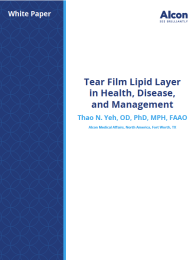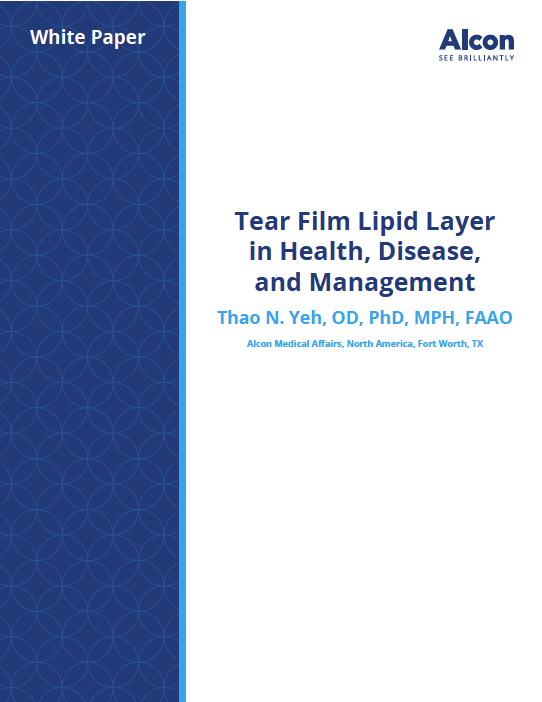

Key Messages
- The tear film lipid layer plays an important role in maintaining ocular surface homeostasis. It is comprised of a bulky outer non-polar lipid layer and a thin inner polar lipid interface. The non-polar lipids have no charge distributed throughout the molecule, while polar lipids have positively and/ or negatively charged end(s). Together, these lipids, which mostly originate from the meibomian glands, help to protect and stabilize the tear film.
- In patients with meibomian gland dysfunction (MGD), the lipid composition and physical properties in both the meibomian glands and tear film might be altered. Meibum in MGD is more rigid and has a higher-than-normal phase transition temperature, which means supplemental heat energy is required to liquefy the more rigid MGD meibum. Furthermore, the quantity of both non-polar lipids (e.g., cholesterol and wax esters) and amphiphilic lipids, which have a polar head and non-polar tail (e.g., phospholipids and sphingomyelins), might be reduced in both meibum and tears, resulting in even less availability of lipids and further compromising tear film protection and stability.
- Therapies for MGD aim to replenish or supplement the tear film lipids. Eyelid heating and expression, such as with the Systane iLux, can increase meibum fluidity to clear blockages and replenish the tear lipid layer, particularly of non-polar lipids. Anionic (negatively-charged) phospholipid-enhanced nanoemulsion artificial tears, such as Systane COMPLETE, can supplement the inner polar lipid interface to stabilize the tear film and improve the spread and retention of the lubricating demulcent.


